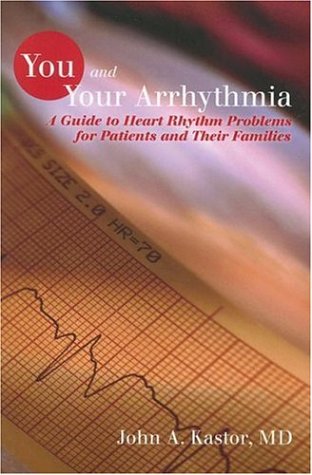موضوعات
آموزش و پرورش
ادبیات و زبان
پزشکی، دندانپزشکی و داروسازی
تاریخ و جغرافیا
داستان و رمان
دیگر
دین و فلسفه
روانشناسی
ریاضیات و آمار
سلامتی، تناسب اندام و رژیم غذایی
شیمی و پلیمر
علوم اجتماعی و حقوق
علوم زیستی و بیوتکنولوژی
فیزیک و نجوم
کامپیوتر و اینترنت
کتابهای کودکان و داستان
کسب و کار و اقتصاد
کشاورزی و دامپزشکی و غذا
معماری
مهندسی و فناوری
هنر و تئاتر
محصولات
Healing the Shame That Binds You - PDF
نویسندگان: خلاصه: In an emotionally revealing way John Bradshaw shows us how toxic shame is the core problem in our compulsions, co-dependencies, addictions and the drive to super-achieve. The result is a breakdown in the family system and our inability to go forward with our lives. We are bound by our shame. Drawing from his 22 years of experience as a counselor, Bradshaw offers us the techniques to heal this shame. Using affirmations, visualizations, "inner voice" and "feeling" work plus guided meditations and other useful healing techniques, he realeases the shame that binds us to the past. This important book breaks new ground in the core issues of societal and personal breakdown, offering techniques of recovery vital to all of us.Make marketing work for you: boost your profits with proven marketing techniques - Original PDF
نویسندگان: خلاصه: The whole concept of marketing is about being able to place yourbusiness in the most favourable environment. It means listening tothe demands of the customers in the market and meeting their needs.You may have little success if you try and operate the process inreverse by producing something that you think they need. Unless youhave something that they want you are unlikely to make many sales.From the outset you must concentrate on:. selling the right products. at the right price. in the right place. at the right time.The concept of marketing concentrates on these key issues and givesyou a logical framework to enable you to research and analyse themarket. From this you can formulate a strategy to position yourbusiness and gain a competitive advantage.When Someone You Love is Wiccan - PDF
نویسندگان: خلاصه: At last, a book that explains Pagan spirituality to non-Pagans in a balanced, accessible way, while acknowledging the natural anxiety many of them may feel when confronted by a son, daughter, sibling, friend, or co-worker who suddenly proclaims, "I'm a Witch!" Wicca and Paganism are among the world's fastest growing religions. Because so many Wiccan newcomers are young, it may be understandably worrisome, even frightening, to many of the parents, other family members, friends, and associates of today's witches. This book offers an objective, honest introduction to this newly popular old religion, while providing comfort to worried readers. Non-Pagans will appreciate this fair and responsible overview of one of the most mysterious-and misunderstood-modern spiritual paths.Thriller: Stories To Keep You Up All Night: James Penney's New Identity Operation Northwoods Epitaph The Face In The Window Empathy - PDF
نویسندگان: خلاصه: Be prepared to be thrilled as you've never been before Featuring North America's foremost thriller authors, Thriller is the first collection of pure thriller stories ever published. Offering up heart-pumping tales of suspense in all its guises are thirty-two of the most critically acclaimed and award-winning names in the business. From the signature characters that made such authors as David Morrell and John Lescroart famous to four of the hottest new voices in the genre, this blockbuster will tantalize and terrify. Lock the doors, draw the shades, pull up the covers and be prepared for Thriller to keep you up all night.You and Your Arrhythmia: A Guide to Heart Rhythm Problems for Patients & Their Families - PDF
نویسندگان: خلاصه: Cardiac arrhythmias are among our most common afflictions. Usuallythey have little clinical importance and present no risk to the life ofpatients who have them. Occasionally, however, they can produce trou-blesome symptoms and may even bring about the patient’s death.*Arrhythmias produce rapid, slow, or irregular heartbeats of whichsome patients may be acutely conscious, whereas others may beunaware. Explaining what arrhythmias are and how doctors treatthem—when that is necessary—is the purpose of this book.First I explain the anatomy and physiology of the heart, particularlyof the electrical components that give rise to arrhythmias.Then I describe most of the arrhythmias that patients maydevelop. Each chapter has been built around the experiences of apatient for whom the author or one his colleagues has cared. In somecases, I have changed the stories slightly to facilitate understandingand to avoid confusing the picture with issues that the doctors mighthave needed to consider but are unrelated to the topic being dis-cussed. In the next section, I explain how cardiologists use drugs andixPreface* For a more comprehensive discussion of the subject, some readers may want to con-sult the author’s text Arrhythmias (Philadelphia, W.B. Saunders, 2000).devices such as pacemakers and implantable defibrillators to treatarrhythmias.I then invite the reader to take a short course in electrocardiography,for it is this familiar test that we use to diagnose arrhythmias and evaluatethe effects of treatment. The reader will find electrocardiograms of someof the arrhythmias discussed in the case reports to see how cardiologistsrecognize which arrhythmia is which.The analysis of arrhythmias has, in recent decades, become so complexthat a subspecialty of cardiology has developed for those who study thissubject. Some call the practitioners of this art arrhythmologists, a name thatno reader of this book is required to learn. Many arrhythmologists work incardiac electrophysiology laboratories, large rooms filled with electroniccomputerized equipment where the details of patients’ arrhythmias arestudied and appropriate treatments are planned and instituted. By describ-ing what goes on in these laboratories, I will try to relieve some of the con-cern that patients who undergo these procedures may have and dispelsome of the mystery about what those working in these laboratories aredoing.2009 International Building Code Need to Know: The 20% of the Code You Need 80% of the Time - PDF
نویسندگان: خلاصه: 2009 International Building Code Essentials at Your Fingertips This handy resource delivers quick access to international building code information. 2009 International Building Code Need To Know explains and interprets the most common International Code Council requirements. Packed with illustrations, this essential tool brings together all the elements you need to design, estimate, and install building systems. Save time and money, reduce errors, stay in compliance, and increase job site safety using this quick reference. 2009 International Building Code Need To Know features: Clear explanations and interpretations of ICC International Building Code Helpful trade tips Detailed visual references Inside this on-the-job guide: Use and Occupancy Classification * Special Detailed Requirements Based on Use and Occupancy * General Building Heights and Areas * Fire-Resistance-Rated Construction * Fire-Protection Systems * Means of Egress * Accessibility * Exterior Walls * Roof Assemblies and Rooftop Structures * Structural Design * Soils and Foundations * Wood * Plastic * Encroachments Into the Public Right-Of-WayFearless Flash: Use Adobe InDesign CS5 and the Tools You Already Know to Create Engaging Web Documents - Original PDF
نویسندگان: خلاصه: InDesign CS5 opens the door to a new world: with the addition of exciting animation tools and deeper multimedia support. It's now a viable interactive authoring tool. Designers want to create engaging interactive content, but may resist making the transition from page layout to timeline-based thinking. But now it's much easier: InDesign CS5's new interactive features are intuitive and easy to learn. And once they've mastered those tools in the familiar world of InDesign, they'll find that Flash isn't scary after all. Designers already know how to add text, graphics, and geometric shapes to a page in InDesign, it's a short walk to adding interactive features. Before they know it, they're creating Flash content.When The Market Moves Will You Be Ready - PDF
نویسندگان: خلاصه: nteractive exercises and trading guidelines for using today's most strategically advanced "event-trading" technique High-profile events and announcements can cause tremendous swings in stocks and sectors, and often point out tremendous opportunities to investors who know how to read them. When the Market Moves, Will You Be Ready? is a "how-to" for knowing which events matter versus which are meaningless, and how to take advantage of the former for consistent trading success. Emphasizing the practical side of trading, When the Market Moves, Will You Be Ready? features exercises, Q&As, and checklists for using investing techniques in day, swing, value, or virtually any other trading or investing style. This hands-on book explores: Techniques for finding the best stock in a given sector Methods for profitably combining technical and fundamental analysis Ways to continually assess market and sector trendsآیا کتاب مورد نظر هنوز بر روی سایت قرار نگرفته است؟ جای نگرانی نیست! کافی است بر روی گزینه سفارش کتاب کلیک کرده و درخواست خود را ثبت کنید. در کمتر از چند ساعت کتاب شما را آماده خواهیم کرد.









